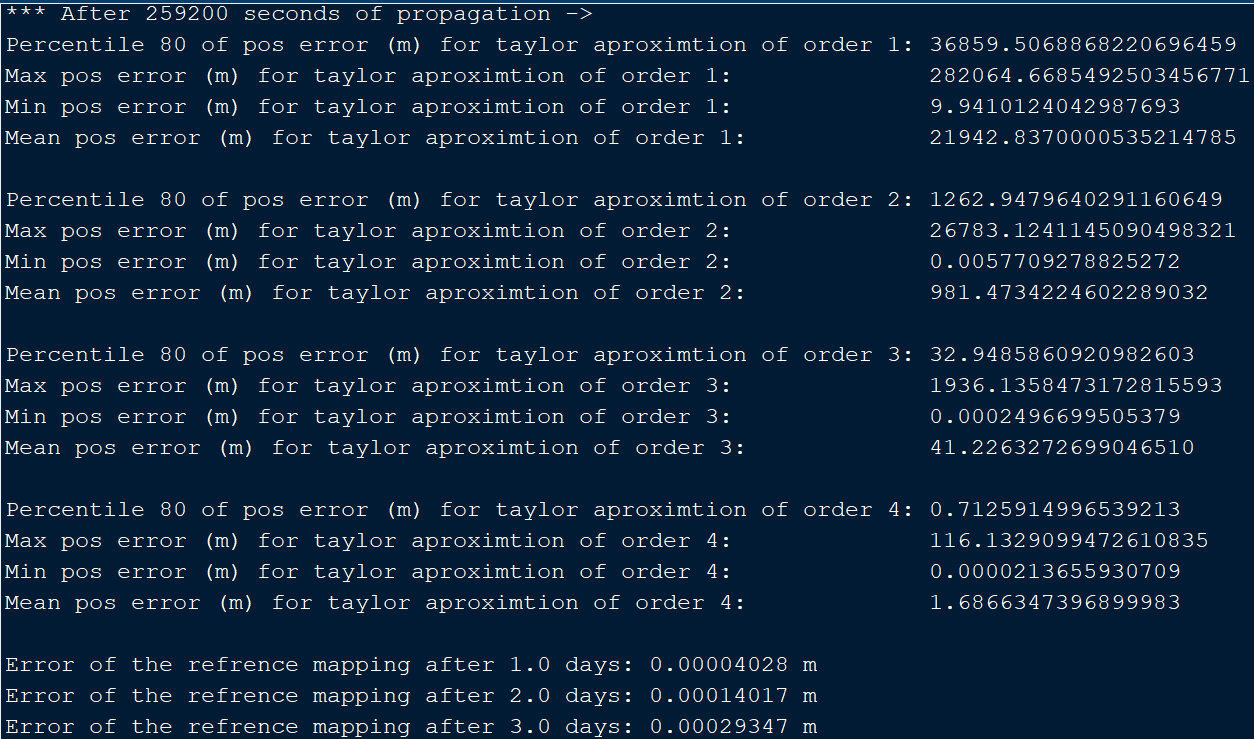Hello, I’m new to the forum and wanted to post about some weird behaviour that I am experimenting with the FieldNumericalPropagator. My goal was to compare the differences in precision between different taylor order aproximations for a propagation (w.r.t a normal propagation, NumericalPropagator, under the same configuration), but was surprised to see that even the reference of the taylor prop. doesn’t map to the same result as the normal propagator, with the difference being in the order of 0.3 mm (position error) after 3 days. I know it isn’t a lot but I expected the same result up to numerical precision so I am a bit confused. Where does the difference comes from? Isn’t the taylor propagator doing the same as the normal one with the real part of the input?
All aspects of the propagation are the same: same initial conditions, dynamical model (all perturbations are the same), and tolerances.
I can post all scripts in case someone wants to check, but for now I will post only the function that is used to create the propagator object, as I think that should suffice to know if I am doing something wrong in the configuration for each case (taylor_order>=0 makes the configuration to use the FieldNumericalPropagation).
Here I leave as well a screenshot of the error statistics for the cloud of points that I am using to compare, and the error of the reference mapping as well:
Thanks in advance for any tip that could help me understand this discrepancies.
createPropagator.m (9.1 KB)
